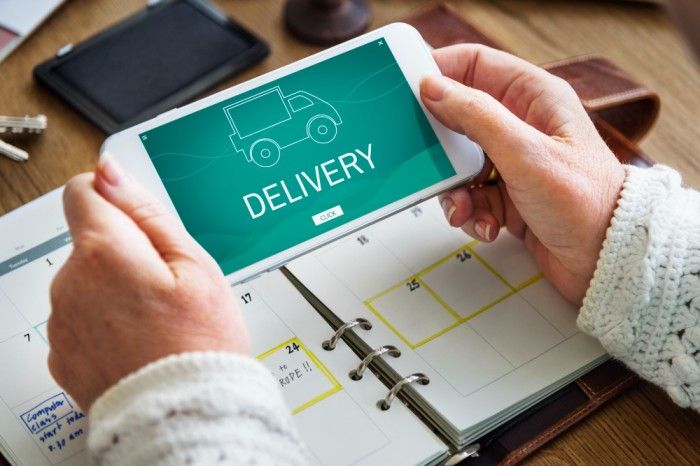Only 20% of small firms offer online services, leaving a largely unexplored market for last-mile deliveries.
Covid-19 is being seen as a black swan event for the world economy, with implications ranging from making remote working a norm to causing a drastic upheaval in the way people spend.
Despite the fact that traditional businesses suffered as a result of the pandemic-induced lockdown‚ the altered landscape worked as a major impetus for digital transformation across business and delivery methods.
In a price-sensitive market, SMEs are constantly working to find their unique advantages. Because of today's disruptive technologies, businesses are expected to provide more value-added services to customers, such as delivery methods that improve customer experience.

Businesses such as pharmacies‚ restaurants‚ personal wellness centers‚ and e-commerce‚ for example‚ demand faster and more dependable delivery services to assure product quality.
Over the last several years‚ the global populace has been accustomed to the concept of last-mile delivery or doorstep delivery‚ whether it is food delivery or e-commerce platforms.
However‚ the pandemic has accelerated the widespread adoption of these on-demand delivery services throughout the world.
According to a KPMG study‚ 80% of clients today expect same-day delivery. In fact‚ 50% of buyers are willing to spend more money for speedier delivery. As customers become accustomed to incredibly fast delivery‚ retailers will increasingly see shipping alternatives as a “need rather than a choice.”
Why must your business invest in on-demand delivery services?
-
Digital advancement
Anyone who is exposed to smartphones gets used to the interface and knows how the on-demand applications work. Be it booking a cab, or ordering dinner‚ it’s easy to understand the application interface.
Customers, therefore, are highly dependent on mobile applications to fulfill their basic requirements, just by clicking on them. This digital shift provides the added convenience of having a dedicated app that can render a particular service.
-
Gain a competitive advantage
The shifting loyalty has made the on-demand market an ideal option for customers. Instead of stepping out to shop for groceries‚ people prefer ordering online through platforms like Grofers or Big basket
This shift has been of great interest and value to small businesses‚ which can jump on the bandwagon and benefit locally.
-
Upgrade shopping experience for customers
Customers love comfort.
If you mix it with a smooth shopping experience, your audience will turn into a loyal customer base.The on-demand economy isn’t going to be obsolete anytime soon, which gives you an opportunity to explore the industry, invest in it, and improve your business by making your customers happy.
-
Competitive Differentiation
Standing out in a competitive market is crucial for SMEs. Offering on-demand delivery can set businesses apart from competitors who do not provide this level of convenience, giving them a unique selling proposition.
-
Customer Data Insights
Implementing on-demand delivery systems can provide SMEs with valuable customer data and insights. This data can be analyzed to understand customer preferences, shopping behaviors, and trends, enabling businesses to make informed decisions and tailor their offerings.
-
Customer Loyalty and Retention
Providing reliable and timely on-demand deliveries can enhance customer satisfaction and loyalty. Satisfied customers are more likely to return for repeat purchases and recommend the business to others.
-
Marketing and Promotion Opportunities
On-demand delivery services can be leveraged for marketing and promotional activities. Offering limited-time free or discounted delivery options can attract new customers and incentivize repeat purchases.
-
Feedback and Improvement
The on-demand delivery process allows for direct interactions with customers during the delivery phase. This can serve as an opportunity to gather feedback, address concerns, and improve the overall customer experience. -
Reduced Overhead Costs
Outsourcing delivery to logistics partners can help SMEs save on operational costs related to maintaining a dedicated delivery fleet, storage facilities, and associated infrastructure.
How do SMEs start investing in on-demand delivery services?
Build partnerships with logistics companies
Owning a delivery fleet is not the ideal business strategy for SMEs because it reduces cash flow and raises operating and maintenance costs. This puts additional strain on firms during quiet seasons.
As a result‚ partnering with logistics businesses to manage your last-mile delivery can alleviate investment concerns while also allowing you to handle ad hoc requests in a more flexible manner.
Customers’ purchasing intent and retention rise when they can get their goods quickly.
How do we help?
Establishing an online presence may be appealing but it also has its own set of challenges. If you've been considering how to start a business, now is the time to get out there and start an online business.
Jump onto Delby and give your business an online presence.
It’s time
Frequently Asked Question
Ques: What steps can SMEs take to ensure the quality and reliability of their on-demand delivery services?
Ans: To ensure the quality and reliability of their on-demand delivery services, SMEs can take the following steps:
- Partner Selection: Collaborate with reputable logistics partners known for their reliability and efficient delivery operations.
- Clear Communication: Maintain transparent communication with customers regarding delivery timeframes, updates, and potential delays.
- Real-time Tracking: Implement robust tracking systems that allow customers to monitor the status and location of their orders in real-time.
- Delivery Windows: Provide accurate delivery windows to manage customer expectations and minimize wait times.
- Performance Metrics: Establish key performance indicators (KPIs) for delivery time, order accuracy, and customer satisfaction.
- Staff Training: Train delivery personnel in professionalism, customer interaction, and adherence to delivery protocols.
- Quality Control: Regularly audit deliveries to ensure product quality, packaging integrity, and adherence to safety standards.
- Feedback Loop: Collect customer feedback and act on suggestions to continuously enhance the delivery experience.
- Contingency Plans: Develop contingency plans for adverse weather, traffic, or unforeseen events that could impact delivery schedules.
- Technology Adoption: Leverage technology for route optimization, efficient order management, and seamless communication.
By prioritizing these steps, SMEs can establish a reliable and high-quality on-demand delivery service that enhances customer satisfaction and builds trust in their brand.

